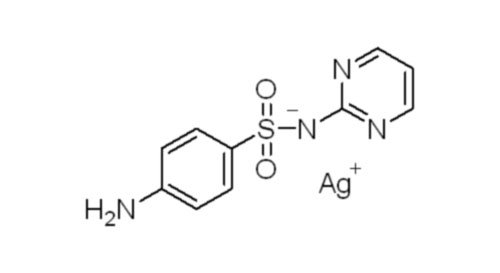总的来说,鉴于没有强有效的临床证据支持SSD在烧伤的应用以及“业界的利润增长通常来自加强广告宣传而非更强的疗效证据” [13],Brölmann等人在英国外科杂志上的系统评述里做出的结论“磺胺嘧啶银不宜用于治疗烧伤”和建议“在急性创伤中不要使用磺胺嘧啶银作为局部治疗药物”是确实可信的。他们的研究
帮助阐明了没有证据表明含银敷料和制剂,尤其是SSD,对类似烧伤的某些类型创伤的治疗有效,这暗示着目前的临床实践不是基于证据的,为了获得最佳治疗效果需要改变。正如Palfreyman对Brölmann等人所做的评论[13],“他们的评述会帮助临床医生和决策者们在做决定时是根据临床证据,而不是根据传统或专家意见。这在创伤治理领域尤其重要,因为这个领域常常缺少高质量的临床证据,而系统评述可能仅是一种借以合理推断和减少选择的途径”。
In summary, since there is no strong clinical evidence supporting the use of SSD in burns and that “The explosion in profits for industry has more often than not been based on high levels of advertising rather than high levels of evidence of effectiveness” [13], the conclusion “For burn wounds the use of silver sulfadiazine should be discouraged ” and recommendation “In acute wounds do not use silver sulfadiazine as topical agent”, made by Brölmann et al. in their newly published systematic review on British Journal of Surgery, are reliable. Their study helps to illuminate the lack of evidence for silver containing dressings and agents, in particular SSD, for certain types of wound like burns, which may imply that current practice is not evidence-based and needs to change in order to ensure best quality care. As stated by Palfreyman [13], “Their review will help clinicians and policy-makers to make decisions regarding treatment based on evidence rather than tradition or expert opinion. This can be especially important within the area of wound care where high-quality evidence is often lacking and systematic reviews may be portrayed as merely a means of rationing access and reducing choice”.
陶国新 乔治·香农
TAO Guo-xin, George Shannon
北京荣祥再生医学研究所,北京 100020
Beijing Rongxiang Institute of Regenerative Medicine, Beijing 100020
南加州大学安德鲁斯老年学中心人类再生与还童应用科学研究所
The Institute of Applied Science for Human Regeneration and Rejuvenation Andrus Gerontology Center, University of Southern
California, Los Angeles, CA 90089, USA
Corresponding email:tao_939@usc.edu
References
[1] Brölmann FE, Ubbink DT, Nelson EA, et al. Evidence-based decisions for local and systemic wound care. Br J Surg. 2012, 99(9):1172-83.
[2] Aziz Z, Abu SF, Chong NJ. A systematic review of silver-containing dressings and topical silver agents (used with dressings) for burn wounds. Burns. 2012, 38(3):307-18.
[3] Petticrew M, Wilson P, Wright K, Song F. Quality of Cochrane reviews. Quality of Cochrane reviews is better than that of non-Cochrane reviews. Brit Med Journal, 2002, 324: 545.
[4] Wasiak J, Cleland H, Campell F. Dressings for superficial and partial thickness burns. Cochrane Database Syst Rev, 2008, article (4)CD002106.
[5] Storm-Versloot MN, Vos CG, Ubbink DT, et al. Topical silver for preventing wound infection. Cochrane Database Syst Rev, 2010, (3)CD006478.
[6] Hussain S, Ferguson C. Silver sulphadiazine cream in burns. Emerg Med J. 2006, 23:929–32.
[7] Thomas S, Lawrence J, Thomas A. Evaluation of hydrocolloids and topical medication in minor burns. J Wound Care, 1995, 4:218–20.
[8] Lansdown AB, Silver. 2: Toxicity in mammals and how its products aid wound repair. J Wound Care, 2002, 11(5):173-7.
[9] Atiyeh BS, Costagliola M, Hayek SN, et al. Effect of silver on burn wound infection control and healing: review of the literature. Burns, 2007, 3(2):139-48.
[10] Percival SL, Bowler PG, Russell D. Bacterial resistance to silver in wound care.
J Hosp Infect. 2005, 60(1):1-7.
[11] Wasiak J, Cleland H., Burns (minor thermal). Clin Evid (Online). 2009 Oct 27; 2009. pii: 1903.
[12] Miller AC, Rashid RM, Falzon L, et al. Silver sulfadiazine for the treatment of partial-thickness burns and venous stasis ulcers. J Am Acad Dermatol. 2012, 66(5):e159-65.
[13] (S. Palfreyman, Evidence-based decisions for local and systemic wound care (Br J Surg 2012; 99: 1172–1183). British Journal of Surgery 2012; 99: 1184
如果本文对您有帮助,欢迎使用左边赞赏~
¥赞赏


不错,不错,看看了!